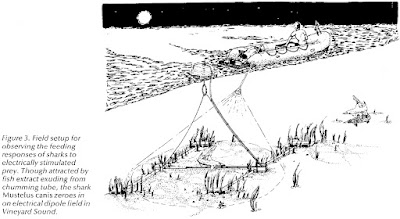 |
| Random Walks in Biology, by Howard Berg. |
Berg died on December 30, 2021. He was the Herchel Smith Professor of Physics in the Rowland Institute at Harvard University. He was known for his studies of flagellar motility and sensory transduction in bacteria, as described in his 2004 book E. coli in Motion.
Berg obtained his bachelor’s degree from Cal Tech, and a PhD from Harvard. He was on the faculty at the University of Colorado, then at Cal Tech, and finally at Harvard. He was a fellow of the American Physical Society and a member of the National Academy of Sciences. In 1984 he and Edward Purcell received the Max Delbrück Prize in Biological Physics from the American Physical Society “for the elucidation of complex biological phenomena, in particular chemotaxis and bacterial locomotion, through simple but penetrating physical theories and brilliant experiments.”
I had the pleasure of meeting Berg at a 2014 Gordon Research Conference about Physics Research and Education: The Complex Intersection of Biology and Physics, held at Mount Holyoke College in South Hadley, Massachusetts. He was a quiet, thoughtful, kind man. I wish I knew him better.
Purcell mentioned Berg in his influential article “Life at Low Reynolds Number” (American Journal of Physics, Volume 45, Pages 3–11, 1977).
I might say what got me into this. To introduce something that will come later, I’m going to talk partly about how microorganisms swim. That will not, however, turn out to be the only important question about them. I got into this through the work of a former colleague of mine at Harvard, Howard Berg. Berg got his Ph.D. with Norman Ramsey, working on a hydrogen maser, and then he went back into biology, which had been his early love, and into cellular physiology. He is now at the University of Colorado at Boulder, and has recently participated in what seems to me one of the most astonishing discoveries about the questions we're going to talk about. So it was partly Howard's work, tracking E. coli and finding out this strange thing about them, that got me thinking about this elementary physics stuff.Section 4.10 of Intermediate Physics for Medicine and Biology analyzes chemotaxis, and cites Berg’s 1977 paper with Purcell “Physics of Chemoreception” (Biophysical Journal, Volume 20, Pages 119–136). Below is the abstract.
Statistical fluctuations limit the precision with which a microorganism can, in a given time T, determine the concentration of a chemoattractant in the surrounding medium. The best a cell can do is to monitor continually the state of occupation of receptors distributed over its surface. For nearly optimum performance only a small fraction of the surface need be specifically adsorbing. The probability that a molecule that has collided with the cell will find a receptor is Ns/(Ns + πa), if N receptors, each with a binding site of radius s, are evenly distributed over a cell of radius a. There is ample room for many independent systems of specific receptors. The adsorption rate for molecules of moderate size cannot be significantly enhanced by motion of the cell or by stirring of the medium by the cell. The least fractional error attainable in the determination of a concentration c is approximately (TcaD)−1/2, where D is the diffusion constant of the attractant. The number of specific receptors needed to attain such precision is about a/s. Data on bacteriophage adsorption, bacterial chemotaxis, and chemotaxis in a cellular slime mold are evaluated. The chemotactic sensitivity of Escherichia coli approaches that of the cell of optimum design.
To learn more about Berg's life, education, and career, read his interview with Current Biology.
Biology is wet and dynamic. Molecules, subcellular organelles, and cells, immersed in an aqueous environment, are in continuous riotous motion. Alive or not, everything is subject to thermal fluctuations. What is this microscopic world like? How does one describe the motile behavior of such particles? How much do they move on the average? Questions of this kind can be answered only with an intuition about statistics that very few biologists have. This book is intended to sharpen that intuition. It is meant to illuminate both the dynamics of living systems and the methods used for their study. It is not a rigorous treatment intended for the expert but rather an introduction for students who have little experience with statistical concepts.
The emphasis is on physics, not mathematics, using the kinds of calculations that one can do on the back of an envelope. Whenever practical, results are derived from first principles. No reference is made to the equations of thermodynamics. The focus is on individual particles, not moles of particles. The units are centimeters (cm), grams (g), and seconds (sec).
Topics range from the one-dimensional random walk to the motile behavior of bacteria. There are discussions of Boltzmann’s law, the importance of kT, diffusion to multiple receptors, sedimentation, electrophoresis, and chromatography. One appendix provides an introduction to the theory of probability. Another is a primer on differential equations. A third lists some constants and formulas worth committing to memory. Appendix A should be consulted while reading Chapter 1 and Appendix B while reading Chapter 2. A detailed understanding of differential equations or the methods used for their solution is not required for an appreciation of the main theme of this book.
Howard Berg. Marvels of Bacterial Behavior. Part 1.
Howard Berg. Marvels of Bacterial Behavior. Part 2.














